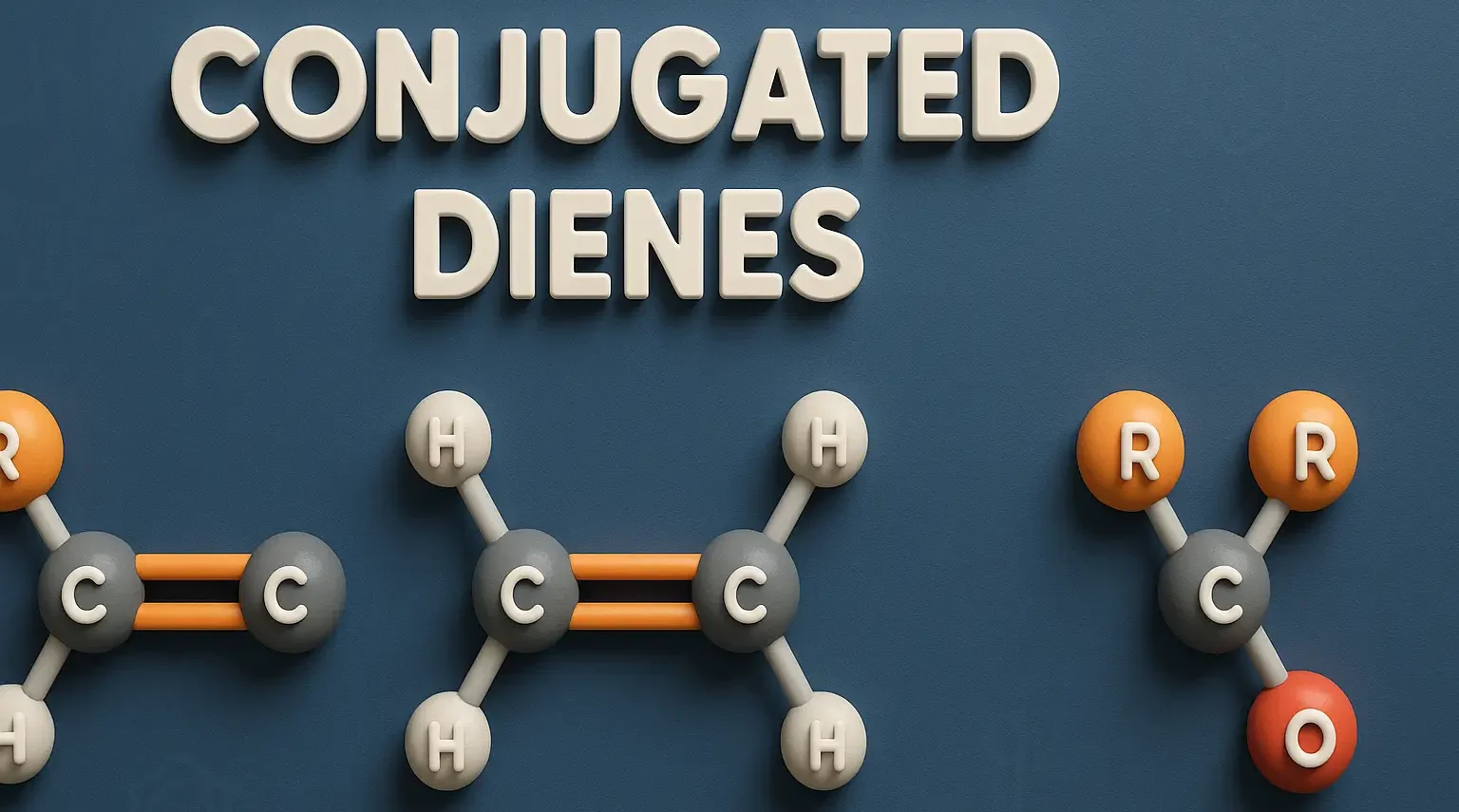- Conjugated dienes are a fascinating class of organic compounds characterized by two carbon-carbon double bonds separated by a single carbon-carbon bond.
- This unique structure endows dienes with remarkable physical and chemical properties, distinguishing them from other types of organic compounds.
- Below, we delve into the intricacies of dienes, exploring their types, nomenclature, physical and chemical properties, and a broad spectrum of applications.
Types of Conjugated Dienes

This is a sample ad placement!
- Conjugated dienes can be broadly classified into two main types:
- 1,3-Dienes: These dienes have double bonds separated by one single bond. An example is butadiene (CH2=CH-CH=CH2), which serves as a foundational molecule in various industrial applications.
- Cumulated Dienes (Allenes): In these structures, two double bonds share a common carbon atom, as seen in allene (H2C=C=CH2). Allenes exhibit unique properties due to their cumulated double bonds.
Nomenclature
- The nomenclature for conjugated dienes follows IUPAC rules with specific considerations:
- Identify the longest chain containing both double bonds.
- Use a prefix for the carbon chain similar to alkanes and alkenes.
- Apply the suffix “-adiene” to denote two double bonds.
- Number the carbon atoms to give the double bonds the lowest possible numbers.
- Name and number any substituents following standard rules.
- Combine all elements to form the complete IUPAC name.
This is a sample ad placement!
Physical Properties of Conjugated Dienes
- Conjugated dienes exhibit unique physical properties:
- Molecular Size and Mass: Increases with the carbon count.
- Boiling Point and Melting Point: Generally higher than non-conjugated dienes, attributed to π electron delocalization.
- Density: Typically, below 1 g/cm³, similar to alkenes and non-conjugated dienes.
- Solubility: Insoluble in water but soluble in nonpolar solvents like hexane and benzene.
Chemical Properties
This is a sample ad placement!
- The chemical behavior of conjugated dienes is influenced by their electron delocalization:
- Stability: They are more stable than their non-conjugated counterparts.
- Reactivity: Capable of undergoing addition reactions with unique regioselectivity and stereochemistry, including 1,2-addition and 1,4-addition.
- Polymerization: Can polymerize to form homopolymers or copolymers, crucial in synthetic rubber and plastic production.
Applications
- Conjugated dienes find applications across a wide array of industries:
- Synthetic Rubber Production: Used in making styrene-butadiene rubber (SBR), polybutadiene, and polyisoprene for tires, hoses, and footwear.
- Plastics Production: Serve as building blocks for plastics like acrylonitrile-butadiene-styrene (ABS) and high-impact polystyrene (HIPS).
- Synthesis of Organic Compounds: Act as intermediates in pharmaceuticals, agrochemicals, and dyes production, utilizing reactions like the Diels-Alder reaction.
- Resins and Adhesives Production: Used in making epoxy resins, phenolic resins, and polyurethane adhesives for automotive, aerospace, and construction.
- Surfactants and Emulsifiers Production: Converted into fatty acids or derivatives for personal care products, detergents, and food processing.
Thank you for reading from Firsthope's notes, don't forget to check YouTube videos!
This is a sample ad placement!

